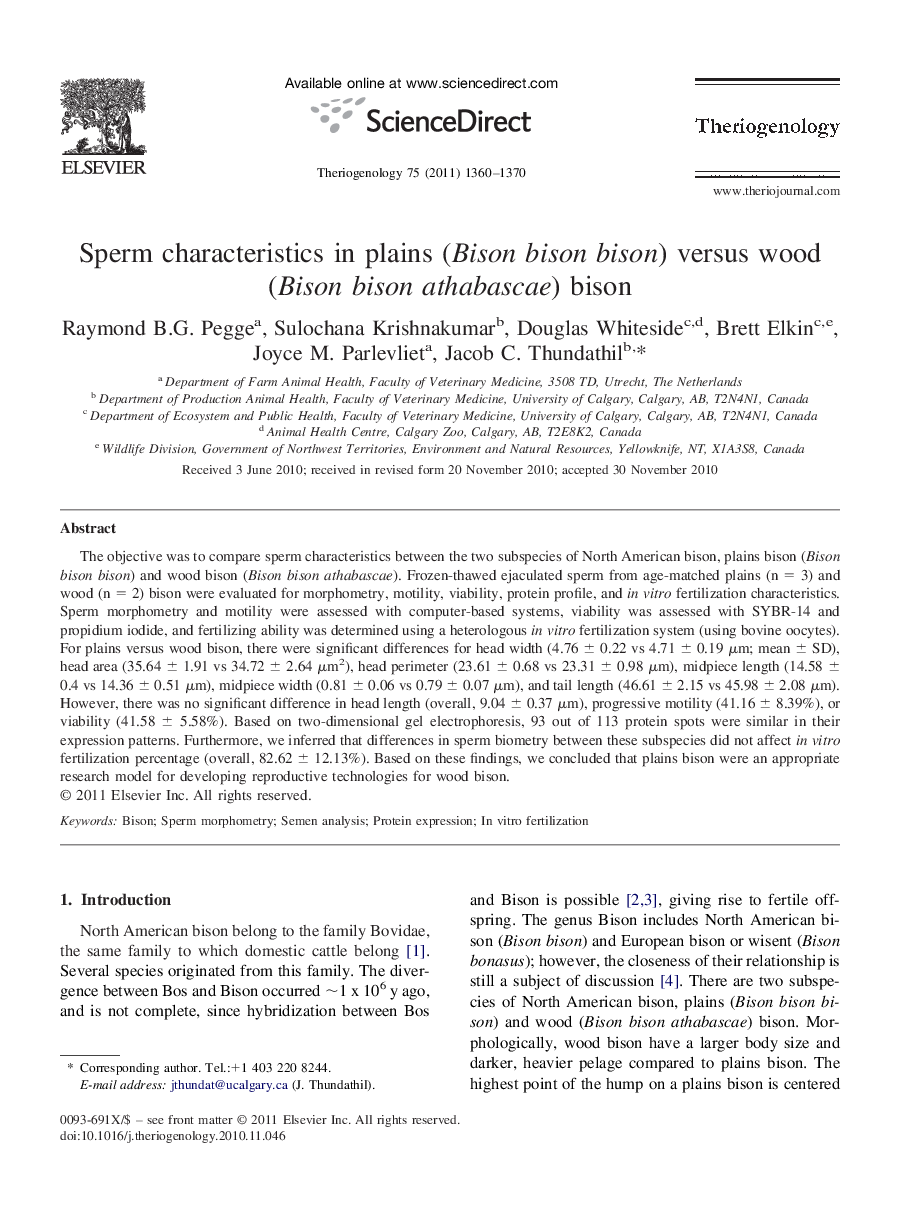| Article ID | Journal | Published Year | Pages | File Type |
|---|---|---|---|---|
| 10892825 | Theriogenology | 2011 | 11 Pages |
Abstract
The objective was to compare sperm characteristics between the two subspecies of North American bison, plains bison (Bison bison bison) and wood bison (Bison bison athabascae). Frozen-thawed ejaculated sperm from age-matched plains (n = 3) and wood (n = 2) bison were evaluated for morphometry, motility, viability, protein profile, and in vitro fertilization characteristics. Sperm morphometry and motility were assessed with computer-based systems, viability was assessed with SYBR-14 and propidium iodide, and fertilizing ability was determined using a heterologous in vitro fertilization system (using bovine oocytes). For plains versus wood bison, there were significant differences for head width (4.76 ± 0.22 vs 4.71 ± 0.19 μm; mean ± SD), head area (35.64 ± 1.91 vs 34.72 ± 2.64 μm2), head perimeter (23.61 ± 0.68 vs 23.31 ± 0.98 μm), midpiece length (14.58 ± 0.4 vs 14.36 ± 0.51 μm), midpiece width (0.81 ± 0.06 vs 0.79 ± 0.07 μm), and tail length (46.61 ± 2.15 vs 45.98 ± 2.08 μm). However, there was no significant difference in head length (overall, 9.04 ± 0.37 μm), progressive motility (41.16 ± 8.39%), or viability (41.58 ± 5.58%). Based on two-dimensional gel electrophoresis, 93 out of 113 protein spots were similar in their expression patterns. Furthermore, we inferred that differences in sperm biometry between these subspecies did not affect in vitro fertilization percentage (overall, 82.62 ± 12.13%). Based on these findings, we concluded that plains bison were an appropriate research model for developing reproductive technologies for wood bison.
Related Topics
Life Sciences
Agricultural and Biological Sciences
Animal Science and Zoology
Authors
Raymond B.G. Pegge, Sulochana Krishnakumar, Douglas Whiteside, Brett Elkin, Joyce M. Parlevliet, Jacob C. Thundathil,
